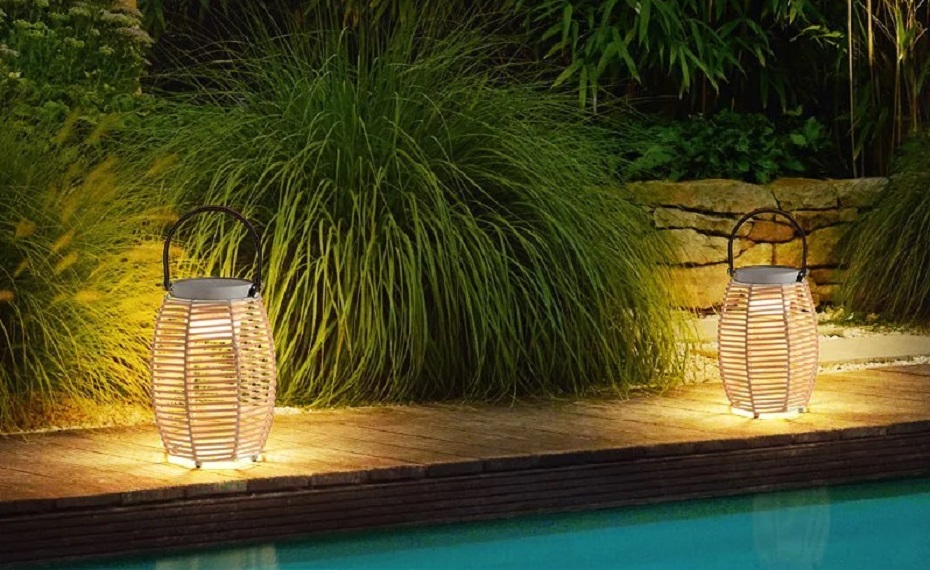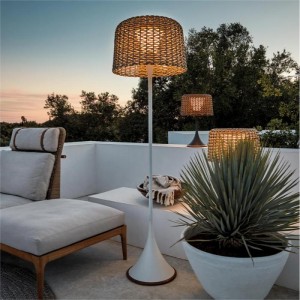As global environmental issues intensify, more and more consumers and companies are beginning to pay attention to the application of environmentally friendly materials in product design and manufacturing. For products such as outdoor garden lights, environmentally friendly materials can not only reduce the negative impact on the environment, but also enhance the competitiveness of products. This article will explore the selection of environmentally friendly materials in outdoor garden lights, analyze the advantages and disadvantages of different materials, and look forward to future development trends.

1. Types of environmentally friendly materials
1.1 Recycled plastics
Source and processing of recycled plastics: Recycled plastics are materials produced by recycling discarded plastic products through processes such as cleaning, crushing, melting, and granulation. It is widely used in outdoor garden lamp housings and lampshades because of its good weather resistance and plasticity.
Advantages: durability, plasticity, and reduced environmental burden.
Recycled plastics not only have excellent physical properties, but also effectively reduce dependence on petroleum resources and reduce carbon emissions. At the same time, recycled plastics can be customized in different colors and shapes according to design requirements, with extremely high flexibility.
Disadvantages: Possible health risks and processing difficulties.
Although recycled plastics have many advantages, they may release harmful substances during processing, which may pose certain risks to health. In addition, the classification and treatment of waste plastics are relatively complicated, and the recycling process still faces challenges.
1.2 Natural materials
Application of renewable resources such as bamboo and rattan: Natural materials such as bamboo and rattan are renewable resources. They are widely used in the design of outdoor garden lights because of their fast growth, easy access and good aesthetics. These materials are not only environmentally friendly, but also highly integrated with the natural environment, creating a unique natural atmosphere.
Advantages: Degradable, natural beauty.
The biggest advantage of natural materials is their degradability, which will not cause long-term pollution to the environment after use. In addition, these materials themselves have unique textures and colors, which can add natural beauty to the product.
Disadvantages: Weather resistance and processing complexity.
The main disadvantage of natural materials is that they have poor weather resistance and are easily affected by moisture and ultraviolet rays, causing aging or damage to the materials. In addition, processing natural materials is relatively complex and may require special processes and equipment.
1.3 Metal Materials
Environmental advantages of aluminum alloy and stainless steel: Aluminum alloy and stainless steel are two common environmentally friendly metal materials. Due to their excellent corrosion resistance and mechanical strength, they are widely used in the structural parts and poles of outdoor garden lights. These materials have a long service life and can be recycled many times, reducing the waste of resources.
Recycling rate and energy consumption: The recycling rate of aluminum alloy and stainless steel is extremely high, and almost 100% of them can be reused, which significantly reduces energy consumption and environmental pollution. In addition, the advancement of modern metallurgical technology has made the production process of these materials more efficient and environmentally friendly.
1.4 Bio-based materials
Plant extracts, wood fibers and their composite materials: Bio-based materials refer to composite materials made from plant extracts or wood fibers, which have attracted much attention in the field of environmental protection in recent years. These materials are not only widely available, but also have good biodegradability, and are an important development direction for outdoor garden light materials in the future.
Future development trends and potential applications: With the advancement of bio-based material technology, such materials will be more widely used in outdoor garden lights, and are expected to replace some traditional petrochemical materials in the future to achieve true sustainable development.
2. Selection criteria for environmentally friendly materials
2.1 Weather resistance of materials
Outdoor garden lights are exposed to the outdoor environment for a long time and must have good weather resistance. For use scenarios under different climatic conditions, it is particularly important to choose suitable environmentally friendly materials. For example, aluminum alloy or stainless steel can be given priority in humid areas, while recycled plastic or bamboo and rattan materials can be selected in dry areas.
2.2 Energy consumption in production and processing
The selection of environmentally friendly materials should not only consider the environmental friendliness of the materials themselves, but also comprehensively evaluate the energy consumption during their production and processing. Try to choose materials with low energy consumption and little impact on the environment during the production process to truly achieve all-round environmental protection.
2.3 Recycling and reuse
When designing outdoor garden lights, it is also necessary to consider the disposal of the product after its life cycle. Choosing environmentally friendly materials that are easy to recycle and reuse can not only extend the service life of the product, but also effectively reduce environmental pollution.
3. Future trends of environmentally friendly materials in outdoor garden lights
3.1 Technological progress and material innovation
With the continuous advancement of science and technology, new environmentally friendly materials will continue to emerge, such as graphene composites, biodegradable plastics, etc. The research and development and application of these materials will bring more possibilities and choices to outdoor garden lights.
3.2 Growing consumer demand for environmentally friendly materials
With the improvement of environmental awareness, consumer demand for environmentally friendly materials continues to grow. This trend will prompt manufacturers to pay more attention to the development and application of environmentally friendly materials to meet market demand.
3.3 Promotion of policies and regulations
Environmental regulations are becoming increasingly stringent around the world, which will further promote the application of environmentally friendly materials in outdoor garden lights. Manufacturers need to actively adapt to policy changes and adjust material selection and production processes in a timely manner to ensure compliance with regulatory requirements.
If You Are in Business, You May Like
We are committed to combining traditional craftsmanship with modern design and have launched a series of outdoor lamps woven from bamboo and rattan. These lamps are not only environmentally friendly, but also highly decorative, and have successfully occupied a place in the high-end market.
In the future, with the continuous advancement of technology and changes in market demand, the types and application scope of environmentally friendly materials will be further expanded. This requires manufacturers and consumers to work together to adopt more environmentally friendly materials and contribute to protecting the earth.
Post time: Aug-10-2024









